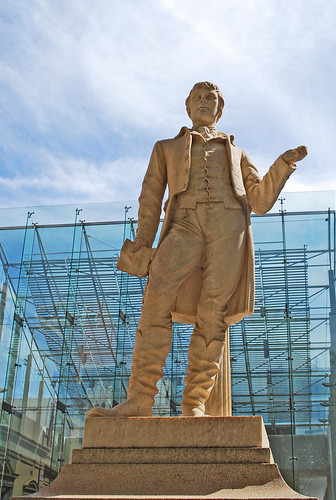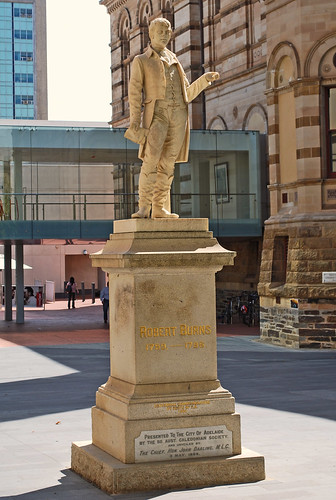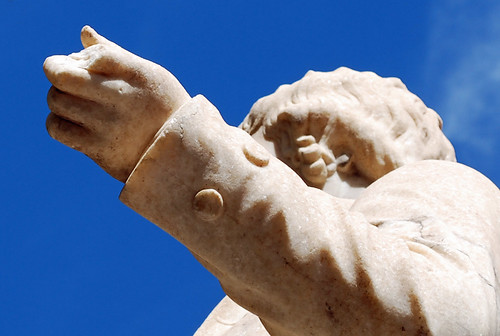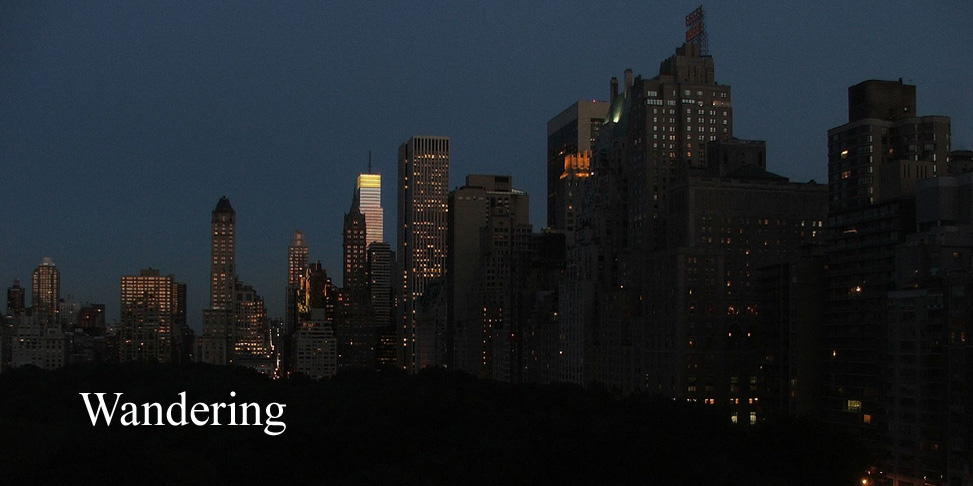
I never intended to make a catologue of memorials to Robert Burns, but since I was visiting Adelaide and since the statue there is found in The World's Memorials of Robert Burns by Edward Goodwillie late of Michigan, I decided to take a look. ( The italicised passages below are taken from Goodwillie's book. )
The second statue of Robert Burns to be erected
in Australia was unveiled on May 5th., 1894, at
Adelaide, the Queen City and Capital of the federated
State of South Australia.
The location of this statue is one of the finest
which any statue of Burns adorns. The site is the
eastern end of the Reserve, opposite Government
House Domain, on Adelaide's glorious North Terrace.
In close proximity are the Public Library,
Art Gallery, Museum, University and School of
Mines.
Since that was written the statue has been moved twice to different locations North Terrace. First to the Art Gallery* and more recently, after restoration, to the State Library.
At the unveiling ceremony, which was presided
over by His Excellency the Lieutenant Governor,
who was received by a guard of honor of the Permanent
Artillery, there were present two direct
descendants of Burns, namely, Mrs. McLellan, a
grand-daughter, who still resides in South Australia,
and Mrs. Burns Scott, a great-grand-daughter.
Thousands of people thronged North Terrace at its
intersection with Kintore Avenue when Hon. John
Darling, M. L. C., pulled the cord and exposed the
figure of the Immortal Bard to their admiring gaze.
As mentioned, this was the second statue of Burns in Australia; the first was at Ballarat, where, according to Goodwillie, a crowd of 40,000 people was present for its dedication. It's not unlikely that a similar crowd was present in Adelaide. I have previously mentioned the elaborate ceremony held in 1905 in Sydney. In an audio file found on the Artlab Australia website, Joanna Barr, who worked on the restoration of Adelaide's Burns, discusses the change in the response of the public to memorials since the late 19th and early 20th century. Although elaborate ceremonies and huge crowds are not longer seen, she tells of the considerable interest in the statue which its restoration attracted.

The Adelaide statue of Burns is of Angaston
marble, and is erected on a pedestal of Monarto
granite. On the die is engraved:
"ROBERT BURNS
1759 -1796."
The inscription on the base is:
"Presented to the City of Adelaide by the Caledonian
Society, and unveiled by the Chief, The
Hon. John Darling, M. L. C., 5th May, 1894."
The statue is full life-size and stands, with the
pedestal, thirteen and a half feet high. The poet is
represented in the garb worn during his first winter
in Edinburgh when he wore the livery of Charles
Fox, blue coat with brass buttons, yellow buckskin,
and top boots. He is supposed to be reciting the
poem of a "Winter's Night" to a company assembled
at the Duchess of Gordon's house in the Scottish
Capital. The attitude is taken from Hardy's
centennial picture, now in the possession of Mrs.
Barr Smith, of Adelaide.
I have noted that the statue by Frederick Pomeroy in the Sydney Domain shows the poet with rather dainty shoes even though he is standing at the plough. The Adelaide statue correctly shows the boots he favoured, even when mixing with the cognoscenti of Edinburgh.
The Angaston marble used for the statue is found in South Australia.*
The sculptor, Mr. W. J. Maxwell, was born in
Scotland, and took his degree in the School of Arts,
London. One of the last works he was engaged
upon in England was the restoration of the enrichments
of Westminster Abbey. Going to Australia
in search of health, he executed the architectural
adornments of all the public buildings in Adelaide,
besides many in Sydney and Melbourne. The Adelaide
"Burns" was the first public statue which he
chiselled, but before leaving Scotland, he prepared
a model of the poet which gained the silver medal
at Kilmarnock. The Adelaide statue impresses the
spectator with a sense of both strength and grace.
Mr. W.J. Maxwell was an interesting figure: he did other work in Adelaide and also worked on St. Mary's Cathedral in Sydney but has no entry in the Australian Dictionary of Biography. He is, however still remembered in Scotland. A short biography appears at Glasgow - City of Sculpture, from which it appears that he also designed and built a "mock castle" named Woodlands Park at Edwardstown SA. It's not everyone who lives in a castle of their own construction, and it's a pity that Maxwell's has gone, and that we don't know more about his life and personality.
The restoration I mentioned began in 2002 when it was reported that:
The Adelaide City Council says the 107-year-old statue needs substantial repairs including work to reassemble its left arm and to stabilise cracks.
A missing finger also needs to be remodelled.
Pictures of the work on the left arm are at Artlab.
I don't know if the finger was remodelled - but it isn't there now.

( * information from audio by Joanna Barr at ArtLab.)





No comments:
Post a Comment